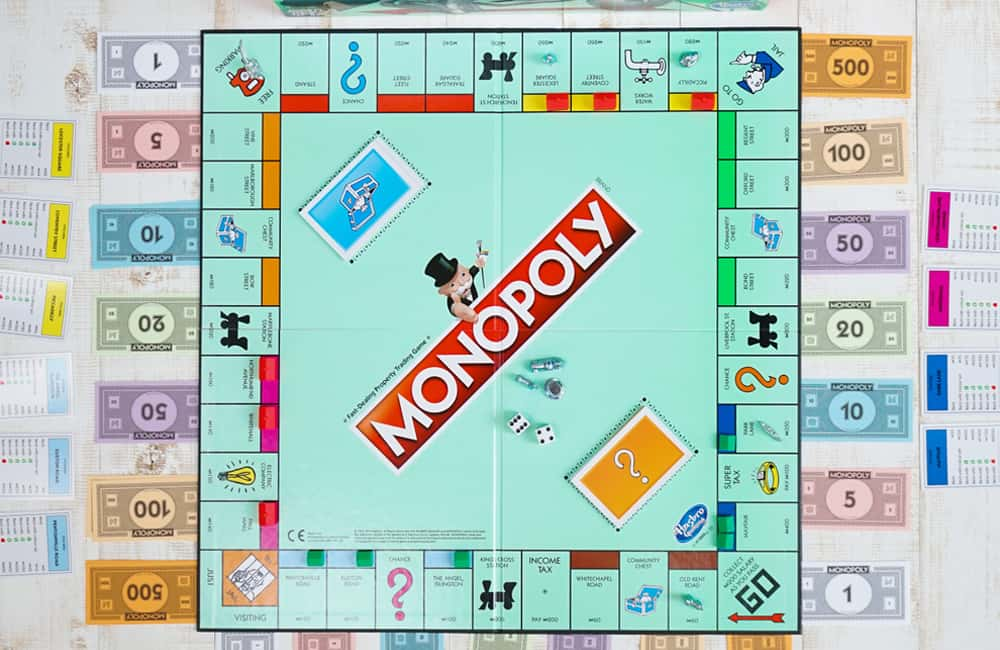

Virtual monopolies can set prices and standards for the industry without fear of losing business. Though alternatives exist, the virtual monopolies dominate the market to the extent that competitors can’t gain much traction. Pure monopolies are rare, but a number of today’s companies have what can only be described as a virtual monopoly.

#Monopolys software
For example, there was a time when Microsoft was the only company in the world that sold software and operating systems for computers, so entities in search of computer-based tools had exactly one option for sourcing these products. No other sellers of the particular product or service exist. The definition of monopoly – pure monopoly – is a company that literally has no competition. The question is whether that massive market presence is an advantage or a disadvantage for shareholders. Investors know there are a number of stocks that are monopolies (virtually). This behavior tends to encourage rather than discourage large businesses from growing their market share. However, they appreciate the benefits offered by economies of scale, and they are quick to patronize massive market leaders rather than the small family businesses desperately trying to compete. Americans are suspicious of companies that have a stranglehold on their respective industries, and they keep a close eye on whether and how those companies use their size and market share to drive profit.
#Monopolys full
Hence, it is a single-firm industry.Stocks That Are Monopolies: The relationship between monopolies and US consumers is full of contradictions. What is a monopoly and what are its three main features?Īnswer: A monopoly refers to a firm which has a product without any substitute in the market. Therefore, he has no control over the prices of the inputs that he uses. He is not the sole buyer of the inputs but only one of the many in the market. Talking about the cost of production, a monopolist faces similar conditions that a single firm faces in a competitive market. Unfortunately, there is no theoretical basis for determining the direction and extent of this shift. In the long-run, the demand curve can shift in its slope as well as location. Therefore, he faces a negatively sloped demand curve for his product. In fact, the monopolist faces demand conditions similar to the industry as a whole. Hence, the demand conditions for his product are different than those in a competitive market. If a monopolist wants to increase his sales, then he must reduce the price of his product to induce: This is because of the decrease in price. Take a look at the table below: Quantity SoldĪs you can see in the figure above, both the revenue curves (Average Revenue and Marginal Revenue) are sloping downwards. Also, when the price changes, the average revenue, and marginal revenue changes too. Therefore, a monopolist can increase or decrease the price. Revenue curves under a MonopolyĪ monopolistic firm is a price-maker, not a price-taker. Sometimes, the monopolist works in a small market making it economically challenging for new firms to enter. There are many reasons for this like legal barriers, technology, or a naturally occurring substance which others cannot find. Strong barriers to the entry of new firmsĮven if the monopolist firm is earning super-normal profits, new firms face many hurdles in trying to enter the industry. Therefore, the monopolist can determine the price of his own choice and refuse to sell below the determined price. Remember, a monopoly can only exist when the cross-elasticity of the product that the monopolist produces is zero. If a close substitute exists, then the monopoly cannot exist. In a monopoly, the product that the monopolist produces has no close substitute. Since there are several buyers, an individual buyer cannot affect the price in a monopoly market.

Therefore, the firm’s demand curve is the industry’s demand curve. This is because there is only one producer and/or seller. Also, in a monopoly, there is no difference between the firm and the industry. The primary feature of a monopoly is a single seller and several buyers.


 0 kommentar(er)
0 kommentar(er)
